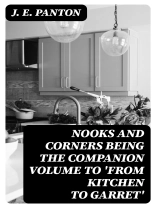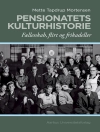In ‚Nooks and Corners: being the companion volume to ‚From Kitchen to Garret, “ J. E. Panton invites readers into a rich tapestry of domestic life, weaving together vignettes that capture the essence of Victorian England. The narrative style blends keen observation with an almost lyrical quality, painting both the mundane and the extraordinary in everyday settings. This work serves as a testament to the intricate relationships between space and identity, as Panton explores the overlooked corners of homes and their profound significance to the human experience. The intertwining of personal anecdotes and societal commentary creates a multidimensional tapestry that resonates with both the historical context and contemporary reflection on domesticity. J. E. Panton, a figure rooted in the Victorian literary tradition, draws from his extensive background in literature and history. His keen interest in the interactions between society and its physical environments undoubtedly influenced the creation of this volume. Drawing parallels with his earlier work, ‚From Kitchen to Garret, ‚ Panton continues to explore the thematic concerns surrounding class, domesticity, and the nuanced experiences of individuals within their private spaces. I wholeheartedly recommend ‚Nooks and Corners‘ to anyone intrigued by the dynamics of domestic life and the hidden stories within our surroundings. This introspective exploration not only enriches our appreciation for the spaces we inhabit but also invites us to reflect on our personal connections to them, making it a valuable addition to both literary and social discourse.
Über den Autor
J. E. Panton remains a relatively obscure figure in the literary world, with limited biographical information readily available. However, Panton’s writings suggest a keen interest in domestic life and the subtler nuances of social settings in the Victorian era. Panton’s work, ‚Nooks and Corners‘ serves as a companion volume to ‚From Kitchen to Garret, ‚ both of which guide readers through the various domestic spaces of the time, providing insights and practical advice on homemaking and interior decoration. These texts have been noted for their detailed descriptions and the author’s ability to give life to the mundane aspects of household management. Literary scholars often categorize Panton’s style as part of the domestic literature genre that was popular during the late 19th century, characterized by its focus on the household as a reflection of personal virtue and social status. Panton’s contribution to this genre offers a window into the day-to-day experiences and aspirations of the Victorian middle class. While the lack of extensive personal details might render Panton’s life a mystery, the works left behind continue to serve as valuable resources for those interested in the history of domestic life and Victorian interior culture.












